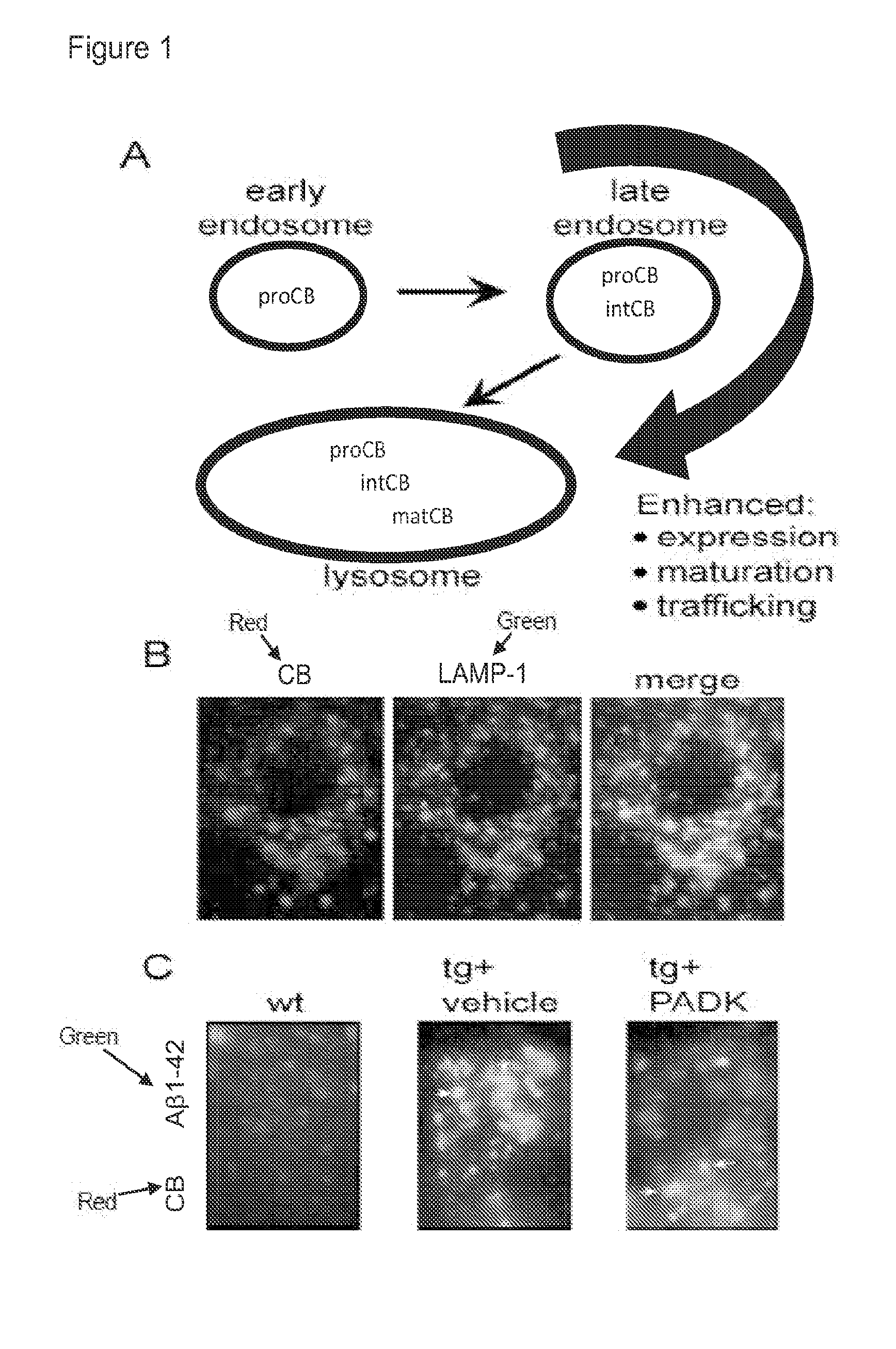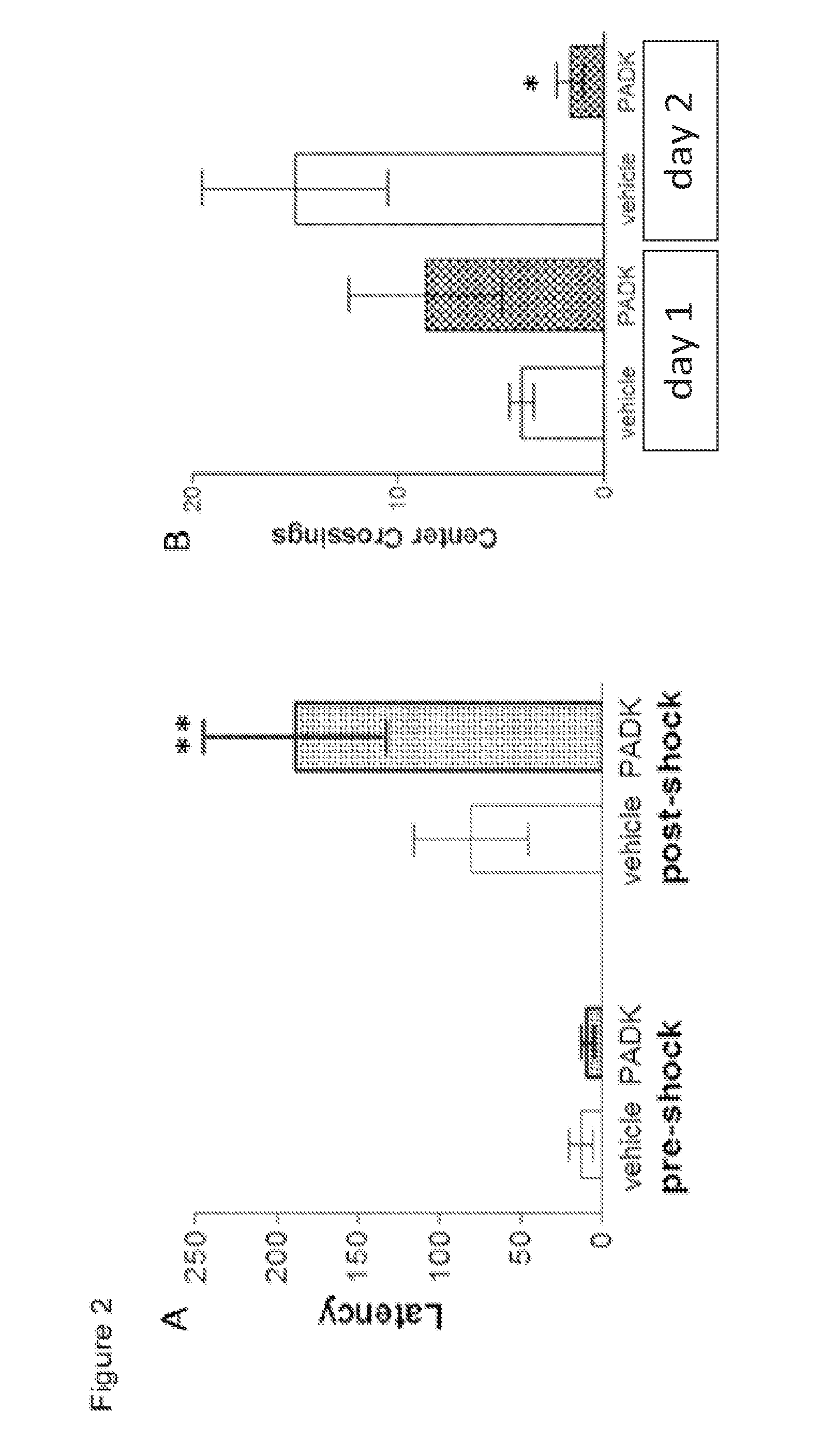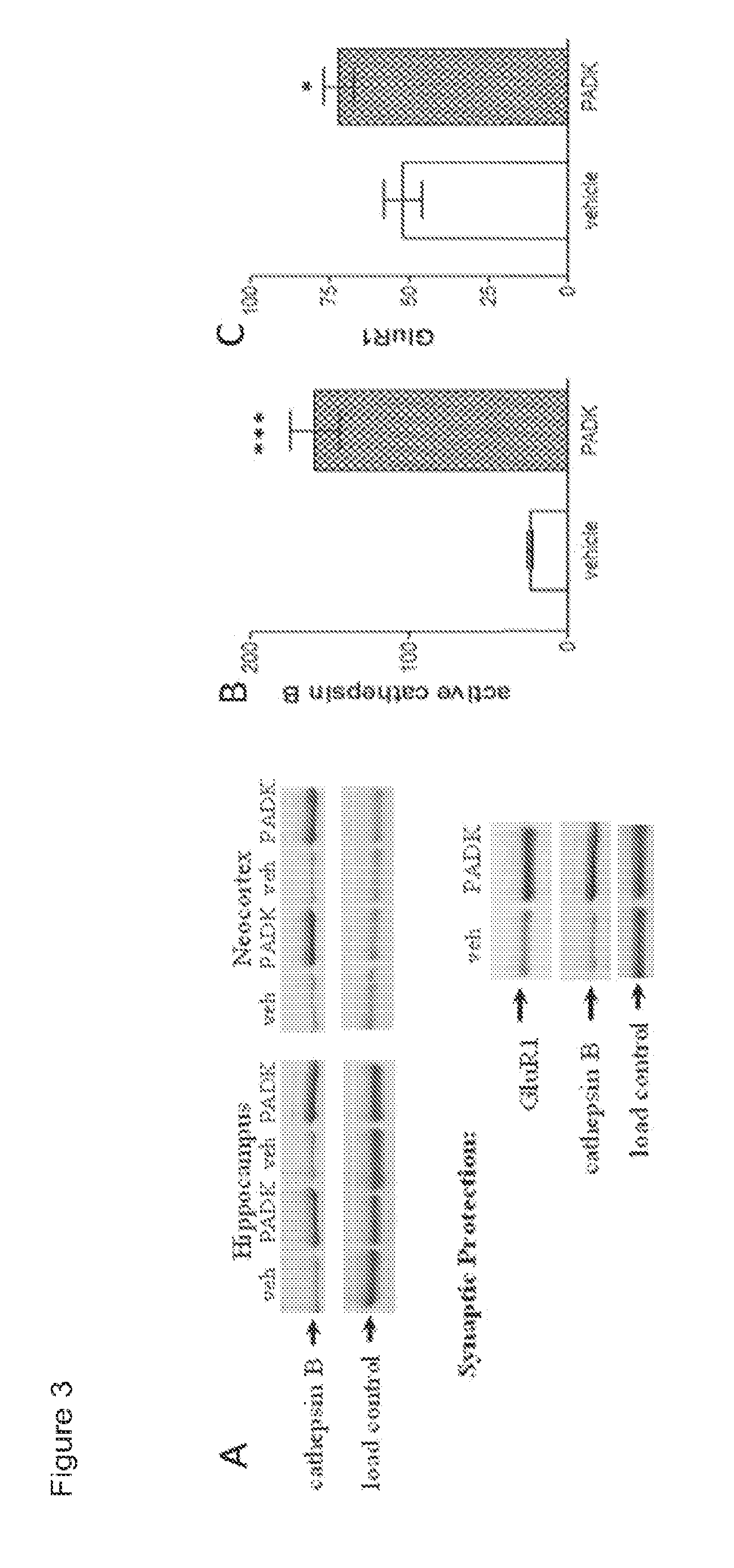Materials for positive cathepsin b modulation and methods of use for treating mild cognitive impairment (MCI), early dementia, a-synucleinopathy, traumatic brain injury, cardiomyopathy, eye disease and skin damage
a positive cathepsin and modulation technology, applied in the field of material for positive cathepsin b modulation, can solve the problems of less effective clearing of toxic accumulation, heart failure, etc., and achieve the effects of increasing the level of active cathepsin b
- Summary
- Abstract
- Description
- Claims
- Application Information
AI Technical Summary
Benefits of technology
Problems solved by technology
Method used
Image
Examples
example 1
Alleviation of Intracellular Aβ1-42 Accumulation
[0289]The lysosomal modulator Z-Phe-Ala-diazomethylketone (PADK) is administered to APPswe / PS1ΔE9 transgenic mice. Low-level PADK enhances cathepsin trafficking and maturation, thereby improving the clearance capacity of lysosomes (FIG. 1). It attenuates both PHF-tau and synaptic decline in the hippocampal slice model of protein accumulation (Bendiske and Bahr, 2003; Butler et al., 2005; Bahr, 2009). In hippocampal tissue of PADK-treated mice, neurons exhibited enhanced levels of cathepsin B that highly co-localized with LAMP1-positive lysosomes in neurons (FIG. 1B). In PADK-treated transgenic mice, the increase in organellar cathepsin B was associated with a decrease in intracellular Aβ1-42 in pyramidal neurons (FIG. 1C).
example 2
Alleviation of Age-Associated Cognitive Impairment and Synaptic Alterations in the Fischer Rat Model of MCI
[0290]The lysosomal modulator Z-Phe-Ala-diazomethylketone (PADK) is administered to determine if age-associated synaptic alterations and cognitive impairment can be alleviated in the aged Fischer rat model by enhancing cathepsin B. In AD transgenic mouse models, the enhanced protein clearance was associated with improved synaptic integrity and cognitive ability, thus indicating the link between lysosomal capacity and the maintenance of brain function (Butler et al., 2011). In two different transgenic mouse models of AD, intracellular Aβ1-42 peptide was reduced in the hippocampus (FIG. 1C) and other brain regions, as were extracellular deposits labeled by anti-Aβ antibodies as well as H and E staining (Butler et al., 2011). Enhanced clearance by the lysosomal modulator was linked to improved synaptic integrity and cognitive ability. PADK has been the subject of intense study for...
example 3
Enhancing Cathepsin B Leads to Reductions in Multiple Types of Proteinopathy-Related Accumulation Events
[0294]Distinct types of proteins involved in proteinopathies, namely Aβ-related peptides, tau species, and α-synuclein, appear to be targeted by a common lysosomal clearance pathway involving the enzyme cathepsin B (CatB). Previously, CatB was shown to degrade Δβ42 into smaller, less pathogenic peptides via C-terminal truncation (Mueller-Steiner et al., 2006). The study also found that genetic ablation of CatB, by crossing CatB− / − mice with hAPP transgenic mice, resulted in increased Aβ42 levels and the worsening of Aβ deposition and other AD-related pathologies. Correspondingly, Aβ deposits in AD mouse models were significantly reduced when CatB activity was enhanced by overexpressing the enzyme through lentiviral delivery (Mueller-Steiner et al., 2006) or by pharmacologically increasing the active form of CatB in neurons with PADK (FIG. 4A). The latter utilized Z-phenylalanyl-al...
PUM
| Property | Measurement | Unit |
|---|---|---|
| View-field widths | aaaaa | aaaaa |
| time | aaaaa | aaaaa |
| time | aaaaa | aaaaa |
Abstract
Description
Claims
Application Information
 Login to View More
Login to View More - R&D
- Intellectual Property
- Life Sciences
- Materials
- Tech Scout
- Unparalleled Data Quality
- Higher Quality Content
- 60% Fewer Hallucinations
Browse by: Latest US Patents, China's latest patents, Technical Efficacy Thesaurus, Application Domain, Technology Topic, Popular Technical Reports.
© 2025 PatSnap. All rights reserved.Legal|Privacy policy|Modern Slavery Act Transparency Statement|Sitemap|About US| Contact US: help@patsnap.com



